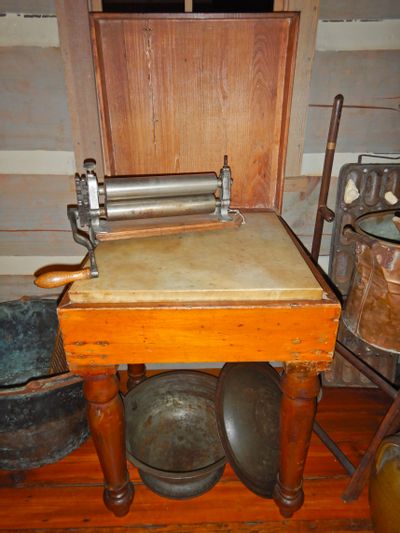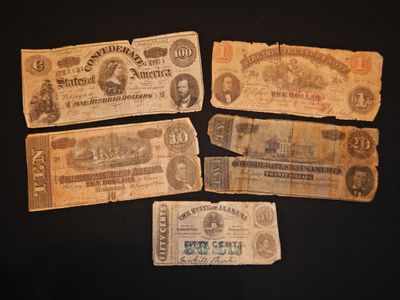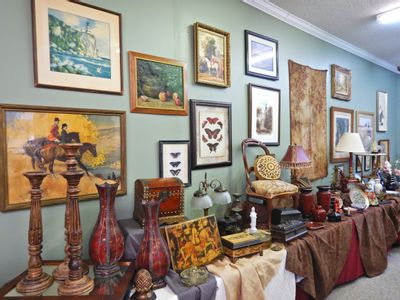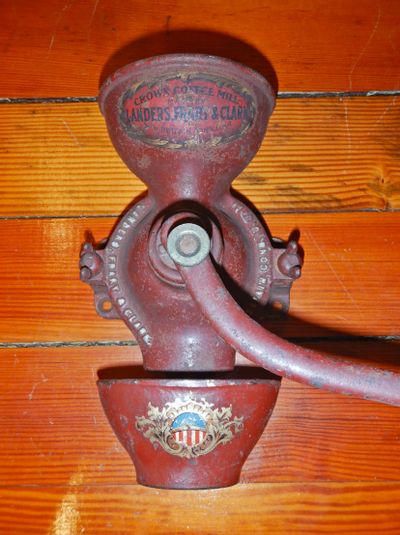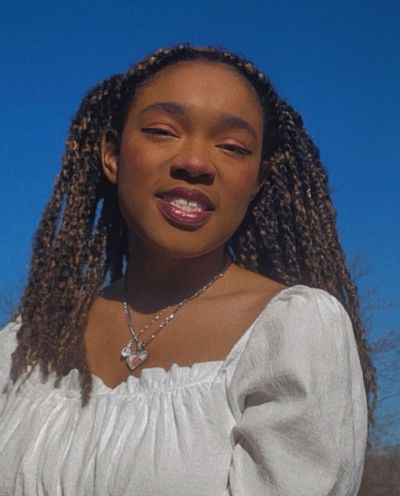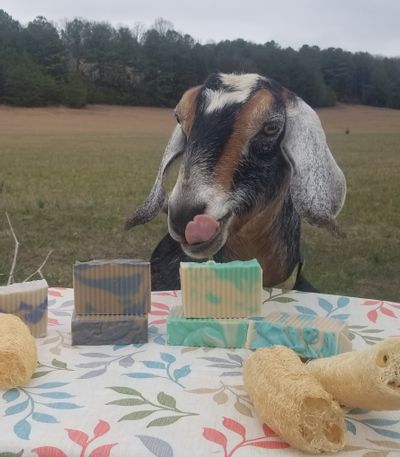Names Among the Threads: Early American Coverlets Exhibit
Last Updated 2/21/2024
By Jubilee P. Reid
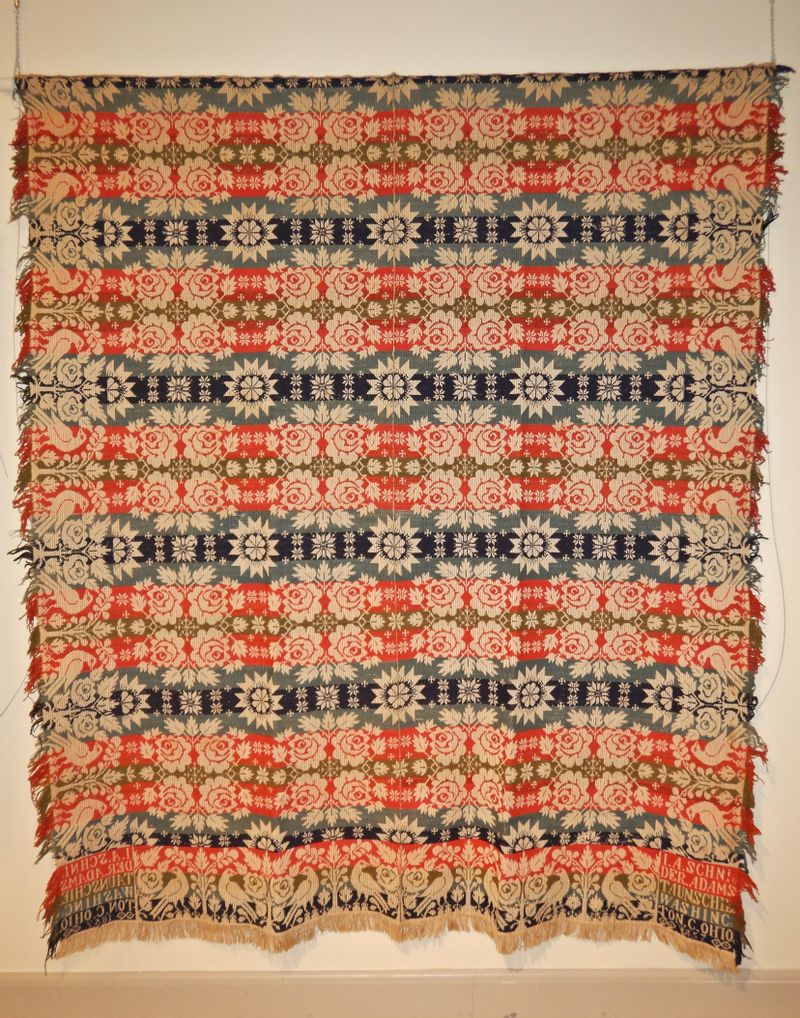
Imagine a time when, if someone needed a new blanket, they had to shear their sheep, wash, dye, card and spin the wool, and spend countless hours weaving the fabric. In the 1800’s this was the way to acquire textiles. Quite a few of these handwoven bedspreads from the early 19th century still exist, having been carefully treasured as family heirlooms for generations. The McMinn County Living Heritage Museum has many such coverlets among their collection and some of them, dating from the early to mid-1800’s, are on temporary display in Gallery One.
19th century looms produced fabric between 20 and 40 inches wide, so to make a coverlet, several panels would be woven and sewn together. Typically, coverlets were made from linen, cotton, wool, or a mixture of these.
The two most common methods of weaving coverlets are overshot and double weave. Overshot is a simple weaving technique which can produce a wide variety of complex geometric designs. This type of weaving is done on four shaft looms which were common in 19th century homes. Double weave is a complicated method involving two layers of weaving being woven together to produce a heavier material. Overshot weaving produces a fabric with the same pattern on both sides but in reversed colors, whereas double woven coverlets could have entirely different patterns on each side due to being made of two separate layers. Double woven coverlets are often referred to as “figured and fancy” due to the complex patterns which often feature birds, flowers, and foliage.
Geometric overshot coverlets were woven by both women and men. Double weave, however, requires a special loom and is usually associated with professional weavers, an occupation historically held by men. Professional weavers, who would travel to customers’ homes and work in exchange for room and board, were common in 19th century America. Professionally made coverlets often had inscriptions with the location, date, weaver’s name, and sometimes the name of the person it was woven for.
One of the museum’s coverlets is a square, double weave, cotton and wool coverlet made of two panels. The top half of each panel is green and cream while the lower half is dark blue and cream. The pattern is a geometric grid with floral centers and an outer border of birds and flowers on three sides. Seven reddish lines run across the pattern. An inscription in the lower corners states that it was woven in Knox County, Ohio in 1851 by “F. Yearous” for “F. Heffen Finger.” The Yearous family emigrated from Eggenstein-Leopoldshafen, Germany in the early 1800’s. They settled in Ohio where they resided for multiple generations. It is unknown who in their family made this coverlet. “F. Heffen Finger” has not been identified in historical records. This faded coverlet has frayed edges, but it is in excellent condition for its age.
One wool overshot coverlet on display has a blue, red, and cream pattern called Governor’s Garden. Made of three panels of varying widths, this coverlet is from Hamilton County, Tennessee. It was woven by Myra Ann Spence Cash DeVault (1849 – 1926), a native of Rhea County. Myra’s grave is in a small family cemetery near Dayton, Tennessee. The coverlet was donated by Myra’s grandson, Harold Cheney Cash, who said his grandmother also spun yarn and raised sheep which was likely the source of the wool for this coverlet.
Another example of overshot weaving, made by a non-professional weaver, is a red and white, double bow knot pattern wool coverlet. Instead of each side of this coverlet being the opposite color pattern, this coverlet has half of each pattern on each side. This was either a construction mistake or the panels were separated and reversed at some point in time to reduce wear. This coverlet has the addition of a separate loose-weave plaid backing attached by machine after original construction, perhaps to extend the life of the coverlet. This coverlet has been repaired many times throughout its history.
Another fascinating coverlet on display is a vivid “figured and fancy” pattern featuring roses and birds in multiple shades of red, green, and blue. The inscription contains the weaver’s name “I. A. Schnider” and the words “Adams Taunschip” (an obsolete Pennsylvania Dutch spelling of “township”) as well as “Washington C. Ohio 1857.” This coverlet’s weaver was of German origin. Ohio had a significant population of German emigrants in the 1800’s; this population was known as Pennsylvania Dutch. Many coverlets from Ohio have German influenced patterns.
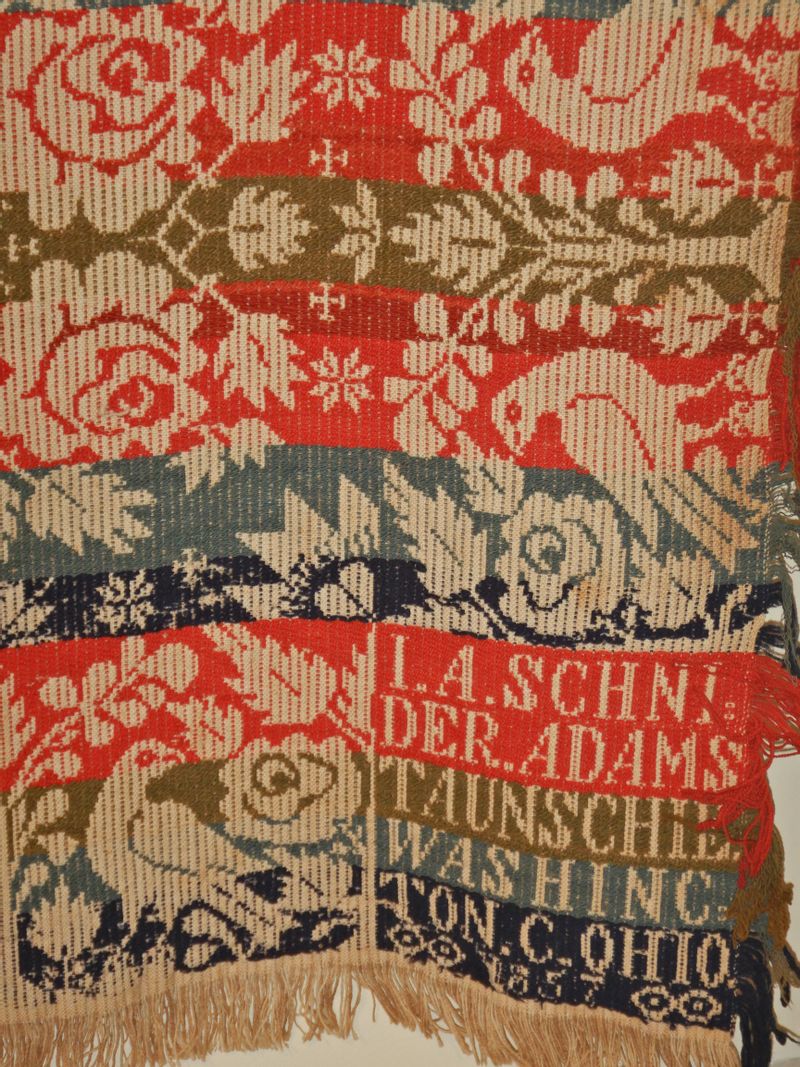
A second “figured and fancy” double weave coverlet on display is dated to circa 1850 and may also have been made by I. A. Schnider. It is blue and white, featuring foliage and several types of birds. This pattern is highly detailed including nests with four chicks each. The parent birds have worms in their beaks. Three sides of this coverlet are surrounded by borders. Two sides have a double border of Oriental style buildings, houses, and trees while the bottom shows different buildings in a more European style. This intricate weaving includes tile roofs on some of the buildings. The maker of these coverlets was exceedingly skilled; the panels are matched together so well that the seam is hardly visible.
These incredible pieces of art represent innumerable hours of work from people about whom little is known other than the weavings they left for us to enjoy. Come to the museum to see this beautiful collection of historic textiles. It will be on display until April 27th.




